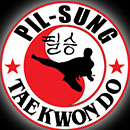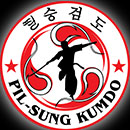There are hundreds of different styles of martial arts currently in existence. Each style puts its own twist on self defense and self growth with different strengths and weaknesses.
Tae Kwon Do is a Korean martial art which combines combat and self-defense techniques with sport and exercise. In Korean, Tae means "to strike or break with foot"; Kwon means "to strike or break with fist"; and Do means "way", "method", or "path". Thus, Tae Kwon Do may be loosely translated as the way of the foot and the hand. Tae Kwon Do was developed by a variety of Korean masters during the 1940s as partial combination of Taekkyeon, Okinawan karate and other traditions.


There are two main branches of taekwondo development, although they are not mutually exclusive. Traditional Tae Kwon Do or to International Tae Kwon Do Federation (ITF) typically refers to the martial art as it was established in the 1950s and 1960s in the South Korean military, and in various civilian organizations, including schools and universities. In particular, the names and symbolism of the traditional patterns often refer to elements of Korean history, culture and religious philosophy. Sport Tae Kwon Do has developed in the decades since the 1950s and may have a somewhat different focus, especially in terms of its emphasis on speed and competition (as in Olympic sparring). Sport taekwondo is in turn subdivided into two main styles. One style is practiced by International Tae Kwon Do adherents and was created in 1955 by Choi Hong Hi. The other style derives from Kukkiwon, the source of the sparring system Sihap Gyeorugi which is now an event at the summer Olympic Games and is governed by the World Taekwondo Federation (WTF).
Haedong Kumdo is a traditional martial art based on a Korean style of Swordsmanship, which is said to be a modern adaptation of sword techniques described in an ancient Korean Martial Arts book called the Mooyeh Dobo Tong Ji. ‘Hae’ translates to Sea or Sun. ‘Dong’ means East or the Rays of Sunlight at Dawn. Haedong can then be interpretated to mean Korea or The Eastern Sea. ‘Kum’ means Sword and ‘Do’ means the way of or the path of self-improvement. Haedong Kumdo consists of techniques from ancient Korean and Chinese military systems, utilizing a one-sided curving sword.


Like all Korean Martial Arts, they were aggressively purged from Korea following the Japanese occupation of Korea in the late 1800’s until to the end of World War II. Since that time a few Masters of those arts have quietly passed down those secret Martial Arts from one generation to the next. This information was then compiled from both Japanese and Korean sword techniques and starting in 1982 the techniques of Haedong Kumdo were finally documented and assembled as a documented martial art. The techniques and movements of Kumdo are beautiful and dynamic, with balance, speed, power, accuracy and oneness of Body, Mind and Spirit.
Brazilian jiu-jitsu is a martial art, combat sport, and a self-defense system that focuses on grappling and especially ground fighting. Brazilian jiu-jitsu was formed from Kodokan Judo ground fighting fundamentals that were taught to Carlos Gracie by Master Mitsuyo Maeda. Brazilian jiu-jitsu eventually came to be its own art through the experimentations, practices, and adaptation from the Judo knowledge of Carlos and Hélio Gracie, who then passed their knowledge on to their family.


Brazilian jiu-jitsu promotes the concept that a smaller, weaker person can successfully defend against a bigger, stronger assailant by using leverage and proper technique, taking the fight to the ground – most notably by applying joint-locks and choke holds to defeat the other person. Brazilian jiu-jitsu training can be used for sport grappling tournaments (gi and no-gi) and mixed martial arts (MMA) competition or self-defense.[4] Sparring (commonly referred to as "rolling") and live drilling play a major role in training, and a premium is placed on performance, especially in competition, in relation to progress and ascension through its ranking system.
Extreme martial arts is a new exciting style of martial arts that is a mix of traditional martial arts styles (Karate, Tae Kwon Do, Kung-Fu, etc.) with added gymnastic/acrobatic moves, and action movie performance aspects. The art will consist of, but not limited to, Basic Tumbling, handstands, handsprings, aerials, round-offs, Flips, Back Flip, X-Outs, multiple kicks in the air, 540 degree kicks, 720 degree spinning kicks, butterfly and butterfly twist kicks.


Extreme martial arts are geared towards students of all ages, sizes, physical skills and experience. Each and every technique will be broken down, and detailed steps will be taken to learn each technique with proper execution. These techniques are sequential, you must learn them in stages, where each technique helps build on the next. In class we will utilize many pieces of traditional gymnastic equipment to ensure safety and ease of learning. Students with more advanced skill will be challenged with more complicated tricks, while beginners will learn the basics of turning kicks into TRICKS! These techniques can be brought back to any traditional style to add some spice, utilized in demonstrations, and overall will help develop strength and agility to make anyone a better athlete.



